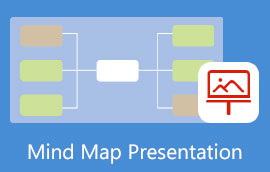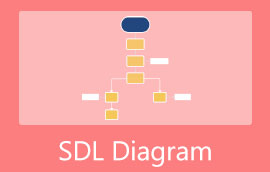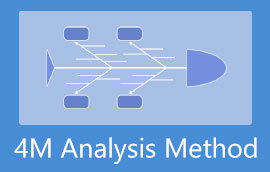What is and How Organizational Charts Work | How to Make one?
As an organization, it is vital to see the structure of the commerce or an establishment. It is to strengthen the workforce by understanding the chain of the company. Most importantly, if an organization has hundreds of employees, monitoring will be a little too difficult to fulfill. But with the proper organizational structure, expediting coordination will be a lot easier. For that reason, making an Organizational Chart will help increase the efficiency of the business. Thus, identifying the hierarchy will enhance the chain of command.

- Part 1. What is Precisely an Organizational Chart?
- Part 2. How Organization Charts are Used?
- Part 3. Top 2 Well-Structured Organizational Chart Makers
- Part 4. 7 Most Commonly Used Types of Organizational Chart
- Part 5. Good-to-know Information in Making Organizational Charts (FAQs)
Part 1. What is Precisely an Organizational Chart?
A hierarchy chart or organizational chart is a diagram that depicts the visual structure of a company's internal system. It is to show the relationship of each member to the organization. More often, it has specific details of individual roles and responsibilities. If the company is well-established and huge, you will see divisions per department to learn each group's relationship. The most commonly used Chart is the 'Hierarchical' type of Chart. It shows the ranking of the officials from the highest position to the lowest level beneath them. Some of the charts used are Company Organization Chart, Project Management Chart, Product Update Plan, and Department Organization Flow Charts.

Part 2. How Organization Charts are used?
Away from the traditional way of making an organizational chart, most companies recently adopted the modern way of making it. A lot of times, they use cloud base software to collaborate and sync data. Some of the uses of organograms are primarily for corporate use. There is a particular purpose as an organization on why organizational charts are used. There are five of them. Read through the subsequent text below.
Identify the point of Communication through Supervisory Communication.
Through this, employees will be able to identify the point of communication through an organizational flow chart. Its purpose is to disseminate the information to the right people. Another benefit of it is the smooth communication of each member. If one knows which person belongs to what department, they can easily rely on it. Adding photos above each name will also help remember each other's faces.
Hierarchical Reconstruction
Suppose that you need to remove or reconstruct the people belonging to the company, switch roles, and promote, charts are best to represent the changes. This way, it will be easier for people to understand the changes brought by the Reconstruction.
Workforce Management
A Workforce organization chart reveals employees that are newly hired, pending applications, and compiles those on the waiting list. Mainly, the Recruitment Department needs to utilize these kinds of charts because it’s easier to track.
Human Resource Planning
When it comes to rearranging roles, it is the job of the Human Resources team to implement the changes or positions of each member of the company. Most people in the institution will rely on the organization of the HR team.
Genealogy Gram
Finally, Genealogy gram is often used to show the relationship of each family member from top to bottom. In this Chart, you can add personal information like name, birthday, and other information the institution allows.
Part 3. Top 2 Well-Structured Organizational Chart Makers
Some companies that offer flexible working environments and remote employees from different countries find the hierarchy diagram useful when everyone accesses it. Every employee will have the opportunity to brainstorm and be more productive. That said, cross-collab is one of the most effective methods in making Organizational Charts. You might as well refer to the list of cloud-based software you can use to create an Org Chart.
MindOnMap
Making a unique organizational chart is fun with MindOnMap. Mind Map will help you turn your ideas into reality. More so, help you become more creative in making it. The accessibility and compatibility of the tool are undeniably flexible. Access it online with any browser without hesitation navigate on the webpage. Techy or not, you will be able to use the tool. You do not have to be good at it to use it. Even beginners can learn it in no time. Whether it is for professional or personal use, it is reliable. That is why this is ideal for any company or organization; big or small, you can easily make an organizational chart with ease. It also has some ready-made templates that you can follow through and edit. Add more cute icons to unleash the creativity within you. We will show you how easy this tool can be to make and access the organizational management chart. Read through the guide below.
Secure Download
Secure Download

Visit the official website of MindOnMap.
Open the launcher by clicking the create Your Mind Map button.
Once landed on the home page, click the New option. Now, choose between the templates. Using a ready-made template, you can select Map Org-Chart (Down or up).
Now, a Canvas will appear to start making the organizational Chart. Begin with adding the Node and Component; the rest of the customization will be up to your creativity.
Finally, click the Export button to be saved on your PC when you are good. You can also leave it to the cloud and come back anytime when you need to make changes. Org charts are supposed to be changing because of Reconstruction.
PowerPoint SmartArt
Aside from relying on cloud-based software, did you know that Microsoft PowerPoint has a specific feature from the ribbon called SmartArt? Although included templates are lesser than others, it is still good to see the info. Most especially if you are making a presentation in this Org chart creator, you can easily add it. The templates are simple and easy to incorporate. Also, each template is editable, you can change the color of each node, line, and even the font you will use. If you are not frequently browsing the features of PPT, you would have noticed this. Meanwhile, SmartArt is easy to find and use. Start making a hierarchy graph using the written instruction below.

Launch the PowerPoint from your Windows or Mac (if you have it installed). Choose New.
From the Menu Tabs, click on SmartArt. From there, click on All. Please scroll up and down to see all templates, choose the template you need for your project, and click it.
After choosing, personalize the template the way you will need it. That's easy. You won't have to save or import the Organizational Chart to your presentation since it's there.
On the other hand, if you are not confident or satisfied with the template and want to check what else is there, here are some of the Types of Organizational charts.
Part 4. 7 Most Commonly Used Types of Organizational Chart
Hierarchical Structure
Among the structures, Hierarchical Structure is the most renowned for the organizational type of Chart. In this structure, employees are categorized from the highest to the lowest. Aside from that, each employee is grouped according to department and function. It includes HR, Accounting, Recruitment, Admin, and down the smallest group or individual in the company. Besides that, you can group employees from different regions if you have partnerships with other countries. In addition, not only people can be ranked using this structure, even products. You can categorize according to the product down to the services it covers.

Horizontal or Flat Structure
Startups or small organizations commonly use flat structure or Horizontal structure. One reason is that it will be complicated to outline a larger workforce to this type of model. Since the layout is Horizontal, each time you add a node or subnode, it expands in a lengthwise structure. If you add more to it, it will look overwhelming. Also, a lot from the hierarchy is eliminated to show the simplest or the most essential department people can go to.

Network Structure
Compared to the previous structure, this one is more complicated. Network structure will give you more detailed and specific internal and external departments. A social network structure inspired by the Network Structure is less hierarchical, and sometimes people find it complex. However, although the visual complexity and decentralization of this Chart may be challenging to understand, it is more informative and depicts more control over the organization.

Matrix Structure
Matrix Structure, or they call Grid Structure. In preference to the traditional hierarchy, this is quite flexible. In this structure, the inclusion of the people in the ranking is hand-picked. That means people with identical skills are taken to different assignments. One is not limited to one department; instead, they are flexible to be assigned anywhere. Dotted lines are commonly used to show that relationship when connecting flexible employees to another department.

Divisional Structure
A divisional structure is one good recommendation to empower one division in a company. A huge corporation often uses this Chart. Most especially if the company has several sub-companies or sister companies, each division operates individually, making divisions independent of each other. Each division has its operational team, including marketing, sales, IT, recruitment, etc. The focus of the Chart varies depending on the needs of the company. Usually, what is needed is prioritized. You can use three types of divisional structure: market-based, product-based, and Geographic-Based.

Line Organizational Structure
Line Organizational Structure is the most common and old form of org Chart. The structure is a vertical flow. Like Hierarchical Structure, the organization is arranged according to authority and position, from top to bottom, down to the lowest-ranked employee. Since it is a pure line, there is no creativeness and other icons aside from nodes. Only text and lines are used. That is why it is also called organizational line drawing because it is straightforward.

Team-based Organizational Structure
Less Hierarchical and more like a summary of the entire organization. The structure begins with the CEO, Operational Managers, Managers, then Team Leaders. Although they are categorized as a team, they commit to individual roles. These days, many corporations adopt a new way to structure the company, especially when businesses deal with services and suppliers.

Further Reading
Part 5. Good to know Information in Making Organizational Charts (FAQs)
What is the information commonly infused in an Org Chart?
Internal or external structure, the basic info you can add are persons name and title, photos, e-address, illustrations, icons, logos, links if necessary, and contact information.
What are some of the critical tips in making a creative Org Chart?
The style and manner of creating the Org Chart are fundamental. If you want your charts to be noticeable, consider making sure of these tips. First, make sure that the people are entirely listed. Then state the position clearly to avoid confusion. It must be clear who is to report to whom—understandable flow, not complex to follow. Be creative and add photos for better identification.
What is the Limitation of an Organizational Chart?
In big or small organizations, the intensity of authority is not mentioned. How each department or manager is connected is also not discussed in the Chart since these are internal matters. Charts are only limited to visualizing the point of communication per position or department.
Conclusion
By now, you are considered an expert in Organizational charts. With all the information you have read, everything you need to know about this structure is given. From organizational chart definition, all types of structure, tips on what to include to make every arrangement good and creative, and most importantly, tools -MindOnMap can help you create them. Hopefully, you will find the solution helpful.











